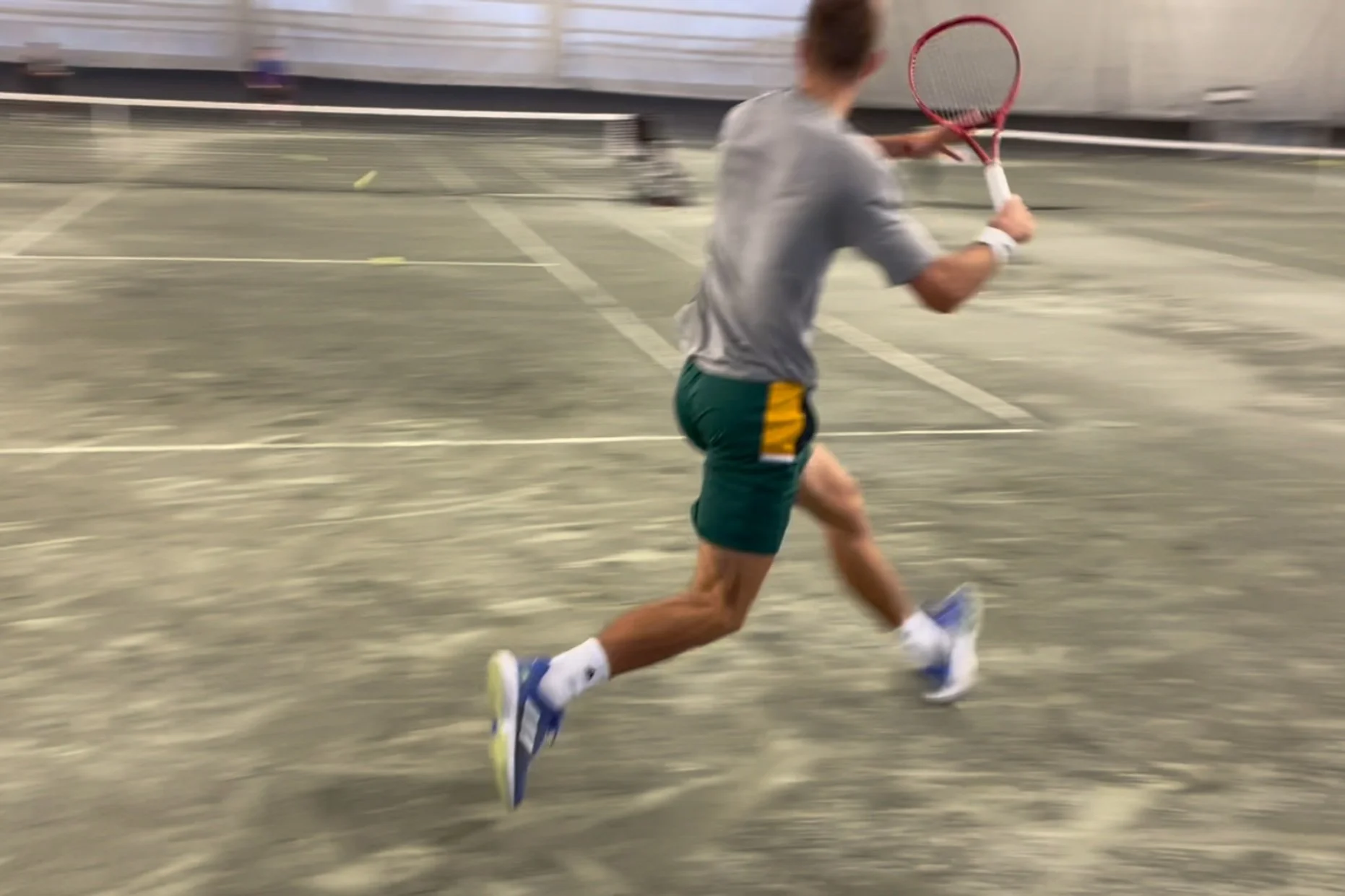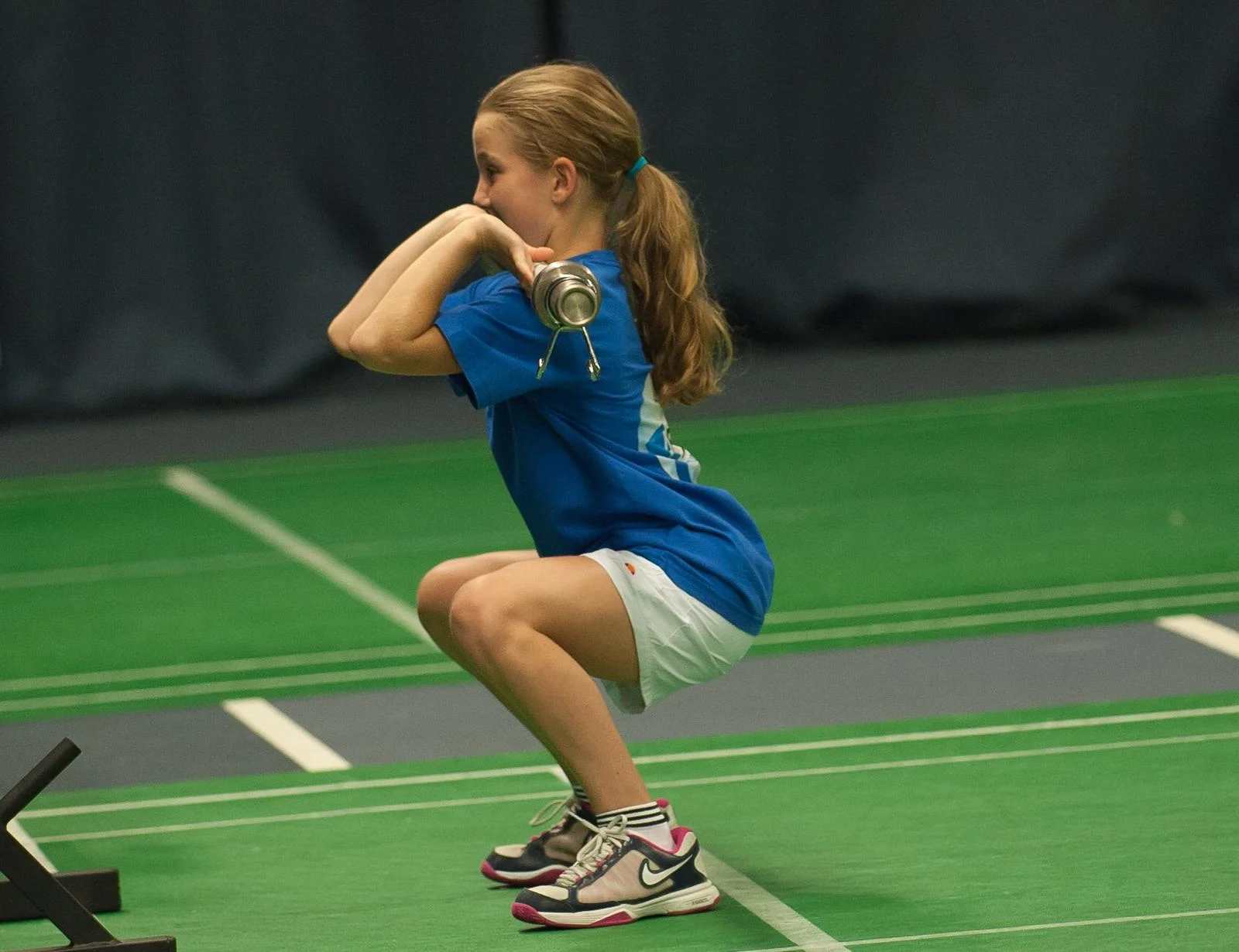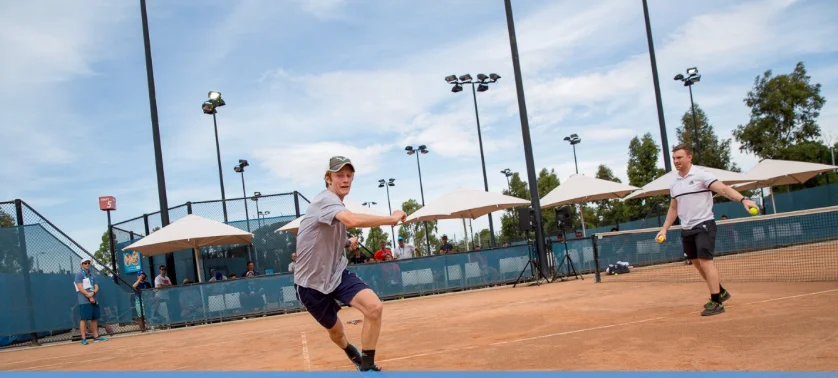’ve received many questions of late and thought it might be interesting to share some of them in a post, along with my thoughts on some key topics. These queries come from players, coaches and even tennis parents.
As you read along, keep in mind that a lot of scenarios are circumstantial, so there could be more than one answer to a particular query. That being said, I will give the most direct, evidence backed response, that I possibly can.
Not long ago, I received the following question “What are some fitness tests I could run my tennis players through. Just some measurements they could aim to improve?”.
This question actually comes up time and again. For me, the question has layers…
You see, I’ve gone down the rabbit hole of testing on many occasions - you know what I’m referring to...going through a battery of tests, recording sprint times, jump heights and so on…
And never really using the data in any meaningful way.
Most of us in tennis won’t argue that today’s game requires high levels of explosive strength - or as it’s often called - power. But many disregard some of the most influential exercises that contribute to this quality: olympic weightlifting movements.
In case you’re not familiar with olympic weightlifting movements, they consist of the clean, snatch, jerk and any variations or derivatives of these 3 lifts (videos examples are found throughout this post).
Many athletes have the following problem - they seek to improve their sport performance while doing an overly large amount of the their training in the weight room.
Tennis players, on the other hand, have the reverse problem. They spend way too much time on-court and their off-court training closely resembles (or mimics) what they’re already doing on the court.
Then there are coaches and players (even parents) that often seek ‘tennis-specific’ training. Depending on how you define it, ‘tennis-specific’ can mean a lot of different things.
Have you ever been working on a player's forehand and thought "they're just not getting it". And instead of talking the player's ear off with detailed mechanics or trying every cue in the book, you decide to get them to throw a med ball.
All of a sudden, after just 1 or 2 cues - something like “thrust your rear hip” or “turn your torso, then release the ball” - they found the correct movement. You then return to hitting forehands and voila, they finally ‘get it’.
By this point, I think we’re beyond prescribing tennis players to run long and slow (at least I hope we are). If you want to understand why this is the case, I urge you to read through this post, as I outline how the energy systems work and interact with one another.
Yet we still need players to be able to endure tough points, tight sets and long matches. No question about it. So how do we do this?
When beginners first start playing tennis, their movements are rather mechanical. While many coaches appear frustrated, this process is totally normal. Why so? Early on, a beginner uses a lot of conscious effort in order to complete a task. But with exposure (and hopefully proper instruction), their movements begin to stabilize...and eventually, after considerable time, they don’t even have to think about their actions, they simply ‘do it’.
For those of you who weren’t aware, my wife and I spent the last 2 years in Munich, Germany. It was a refreshing experience - especially considering that Munich is regarded as one of the nicest cities in Europe. But besides that, I’m eager to share some details about the tennis system in Germany, especially considering I was able to experience it firsthand
My aim is to give you an inside look at what competitive tennis in Germany is all about (based on my perspective) - from the club structure, to the elaborate ranking system and more. Overall, my experiences were quite positive - and I feel that the tennis world in North America can learn a few things from the German system.
Coordination training is an often misunderstood and at times haphazardly delivered element of physical preparation. As with everything in coaching, context is king. A simple search of coordination training can lead you to a whole host of elaborate and dynamic drills. A well-meaning coach sees these drills and looks to implement them in their next practice – again I’m not suggesting that this is malpractice, but, more often than not, the context for including that exercise is missing.
It was a hot, muggy summer’s day in 2010. After winning the 2nd set, the momentum was on my side going into the 3rd. I had never beaten my opponent, ‘Stan the Man’ as we called him (no not Wawrinka...but a very good player nonetheless). But I felt confident. I was moving well, dictating play...and I continued the good play until 4-1 in the 3rd. And then, after hitting an attacking forehand, I felt my right leg completely seize. I hit the ground, gasping for air, trying not to scream. But the pain was too much. My opponent came rushing over to my side of the court, along with fellow players and spectators...I knew what it was though, this wasn’t the first time I had experienced this sort of pain….it was a cramp.
When teaching various tactical scenarios to players, I often ask them the following question: “what do you think is the most common rally length in tennis”? Less experienced players jump to answers like 7 or 9 while those that have been playing for many years reply with 3, 4 or 5. Do YOU know what it is? When it comes to professional tennis, according to Brain Game Tennis, it’s 1. Can you believe that? The most common rally length (called the mode, in statistics) is 1! That’s a service ace or a service winner (i.e. the returner makes an error off the serve). This happens about 30% of the time. The next most common rally length is 3 - that’s a serve, return and one more shot.
In last week’s post, we introduced the concept of grit. We also took a closer look at grit’s correlation to elite sport. What did we find? For one, according to recent evidence, elite athletes across many sports are grittier than their non-elite counterparts. Secondly, those same athletes more consistently commit to their sport over the long haul - in other words, they stick to it. And lastly, the grittier athletes (the elite), were more adept at persevering through challenges compared to non-gritty athletes.
Tennis itself is primarily an individual sport. Even if you play mostly doubles, individual differences between players exist at all levels of the game. This concept is known in sport science as the principle of individualization. Research studies and coaching experience tell us that all athletes respond differently to training. That’s why many fields of study exist - from psychology, to motor learning and strength & power training - each attempting to answer questions that help us better understand human behaviour and the stress-adaptation process (and why there is so much variation in responses to the same training stimuli!).
In the last couple of posts, we explored two key sport science training principles, progressive loading and variation. These training principles were linked to both off-court as well as on-court training for the elite/developing tennis player - in hopes that they could provide the astute coach or player with more insight into the organization of practices and long-term training schemes. But the principles don’t stop there. There are other of equal - or perhaps even greater - importance, especially when it comes to tennis training.
Specificity is this week’s topic of interest. It’s a term that’s been somewhat of a buzzword for the better part of a decade (or longer). Often times, tennis coaches, players and parents are brought to believe that to be a successful tennis player, one must be subscribed to a physical development program that is ‘tennis specific’. When these same tennis folks see programs that include a variety of plyometric work and ballistic lifting in the weight room instead of rotational band work, quick footwork drills, and other movements that ‘mimic’ tennis play, they think to themselves - “this isn’t tennis-specific”. I’ve got news for you though, there’s only one training component that is truly specific to tennis play and that’s...wait for it….TENNIS!
In last week’s post, we took a closer look at the force-velocity relationship and it’s underlying science. Recall that when force requirements are high, velocity outputs will be low - and vice versa. This has important implications because of the different movement requirements on a tennis court along with the methods used to improve relevant athletic qualities. Look at the figure below - it’s a theoretical look at where certain movements and strokes etc. lie on the force-velocity curve (this is an adapted representation based on science and my anecdotal experience). Even some of these movements will have different force-velocity requirements at the muscular level - when decelerating for a wide ball for instance, the initial deceleration step will have higher forces acting on the lower-body then the last step just before planting (because we’re trying to stop from a relatively fast movement speed).
Many experts in the field of motor learning believe that the way a coach interacts with an athlete, bears a tremendous impact on the improvements that athlete makes. These same experts, however, would argue that the organization of a practice is perhaps even more important than what a coach says to his/her athlete. Let’s assume that to be true for a moment. As a coach, would that change the way you look at your practices? As a player, would it affect your perspective when attempting to improve serve accuracy, for example?
The ability to respond quickly and efficiently to an oncoming shot, is perhaps one of the most important qualities a tennis player must possess. This ability is predicated on a number of factors including anticipatory skills, perception skills - picking up cues from the other side of the net, judging the ball appropriately etc. - along with physical qualities, one of them being reactiveness. Further to that, it helps when a player has tremendous change of direction (COD) abilities. Why? Because the player that can recover more efficiently after their previous shot, has a better chance to not only better 'see' the next shot, but also has the ability to respond to that shot with less ‘emergency’ - a term many coaches use.
Are you familiar with the ‘10,000 hour rule’? Many of you probably are. If you’re read Malcolm Gladwell’s book, ‘Outliers’, then you definitely are. The premise goes like this; practice something a lot - 10,000 hours, or about 10 years - and you’ll develop expertise in that particular domain. It sounds simple doesn’t it. But is it truly so? Many of us, or our students, have played tennis for well over 10 years, but I wouldn’t necessarily start calling ourselves ‘experts’. Now we might be pretty good, but expertise, as defined by researchers in this field, means far more than just ‘pretty good’ or even ‘really good’.
What if I could tell you the secret to successfully winning more points and being more in control of a match? Would you want to know? Of course you would! It’s not a secret but sometimes, we look past it, forget about it or take it for granted. You must know the road ahead, because if you know what’s coming next you have an incredible power called Anticipation. Anticipation is the ultimate advantage! The first step in increasing the power of anticipation is to realize and affirm the number one body part that you'll use to play tennis – your eyes. The skill of shifting the eyes from what you just did - striking the ball - to noticing the body position and the racquet position of your opponent, is a critical one. The main reason we lose points and get beat is we fail to anticipate what’s coming next.
Bend your knees. Use your legs. Turn your shoulders. Extend your elbow at impact. Flick your wrists. These are just some of the verbal cues that we’ve all heard countless of times. Notice any similarities? Let me give you a hint...the focus of these instructions are directed exclusively towards a body segment or part. Is this type of feedback relevant? Does it help improve technique and ultimately, performance? Let’s take one of these examples and break it down. 'Bend your knees'. How does a player interpret this cue? I mean how low should I bend my knees? Is a 90 degree bend more or less effective than a 100 degree bend? On which type of shot? Should one knee be bent more than the other? As you can see, this cue can be interpreted in a number of different ways depending on the athlete and the context.





















